Space Is an Ocean, Spaceships Are Submarines
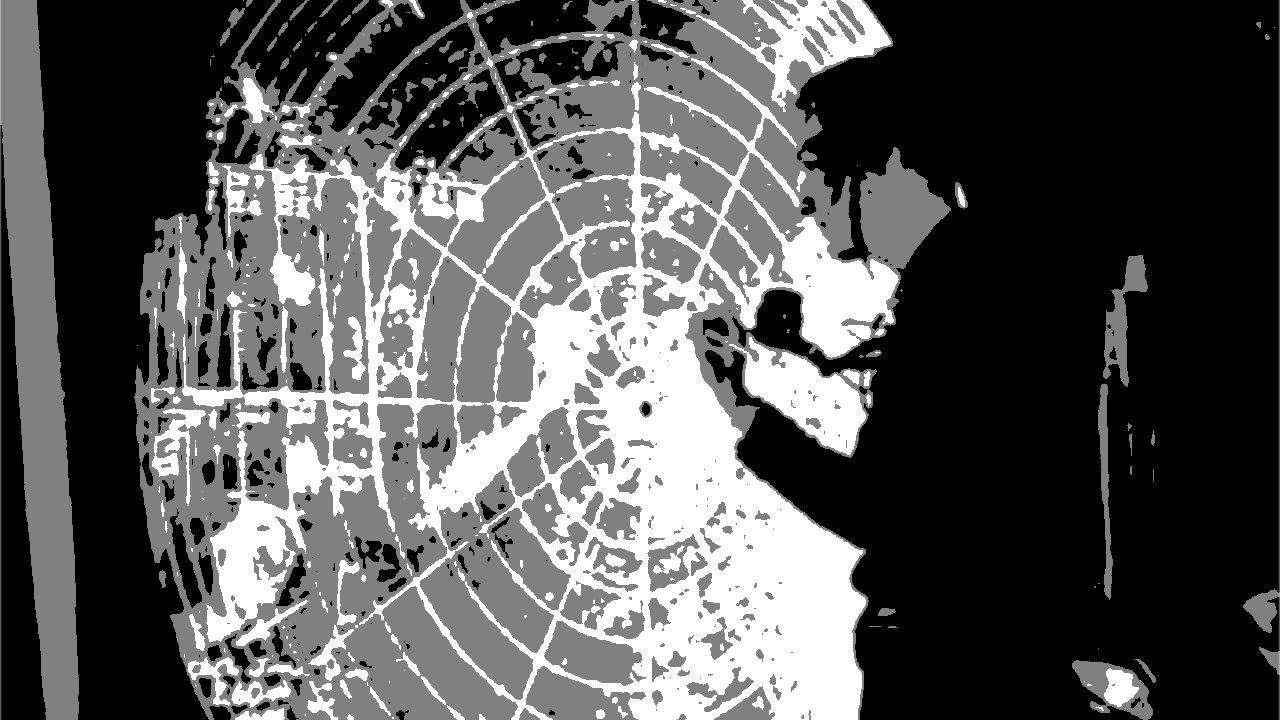
Was thinking about how similar I find spaceships and submarines. This post is my deep dive into the topic and an outline of the setting I use for my sci-fi games.
The main idea:
Spaceships are basically submarines with rocket engines attached.
Here’s why:
With current technology understanding, weapon tech always outpaces armour tech. Flash forward into the future and you get photon torpedoes vs spaceships that are still limited by the weight of their hull plating (no energy shields please, I want every single shot to carry consequences).
So what you get is space travel that is more like submarines swimming in the ocean. Always trying to detect and go undetected (since being seen would mean almost certain annihilation by the enemy).
This is a long one, so buckle in.
Assumptions
For space submarines to work I am going to make a couple of assumptions about the sci-fi setting we are working with. I will call this the “Lo-5” setting:
- Low tech computers. Why bother with squishy humans with horrible reaction times when AI can do it better? This is why the Lo-5 universe has a limit on computer tech, otherwise non-crewed light speed drones become too good of an option. In my games, the 1960s-esque behemoths of tubes and cables are the most complex tech that can still withstand lightspeeds and radiation. You really don’t want your navigation computer to crash mid jump because of a flipped bit.
- Low detection ranges. Since light travels extremely far in space, it becomes very easy to detect objects that emit any sort of heat or thrust across the system. So to give more opportunity for stealth you have to lower the detection ranges by adding objects to hide behind. Those could be asteroids and debris fields, nebulae, gas giants.
- Low space control. In this setting, mass system surveillance must either not exist or be a rarity. If there are tons of detection beacons across every Lagrange point, your ship won’t get very far without trouble. For Lo-5 I prefer an outer rim type system — one or two authority vessels go on patrol runs, but don’t have the resources to fully survey the system.
- Low speeds. I’m not dealing with FTL or near-lightspeed travel when travelling within a system. I don’t want ships to be able to outrun torpedoes most of the time.
- Low-orbit defences. Planetary defences don’t have to resort to ancient computers like those in space. Planet-side, railguns and guided missiles (augmented by AI chips and protected by bunkers) have the luxury of constant active scanning and predicting ship trajectories. The only advantage that spaceships have is being prone to cyberattacks due to the lack of networking. Low-orbit defences ensure that it is too risky to target or bombard a planet from space. Only ship to ship combat is viable.
Now let’s explore some things we can glean from submarines, and what works differently in space.
Structure
Screenshot from Objects in Space (2018), one of the inspirations for the setting
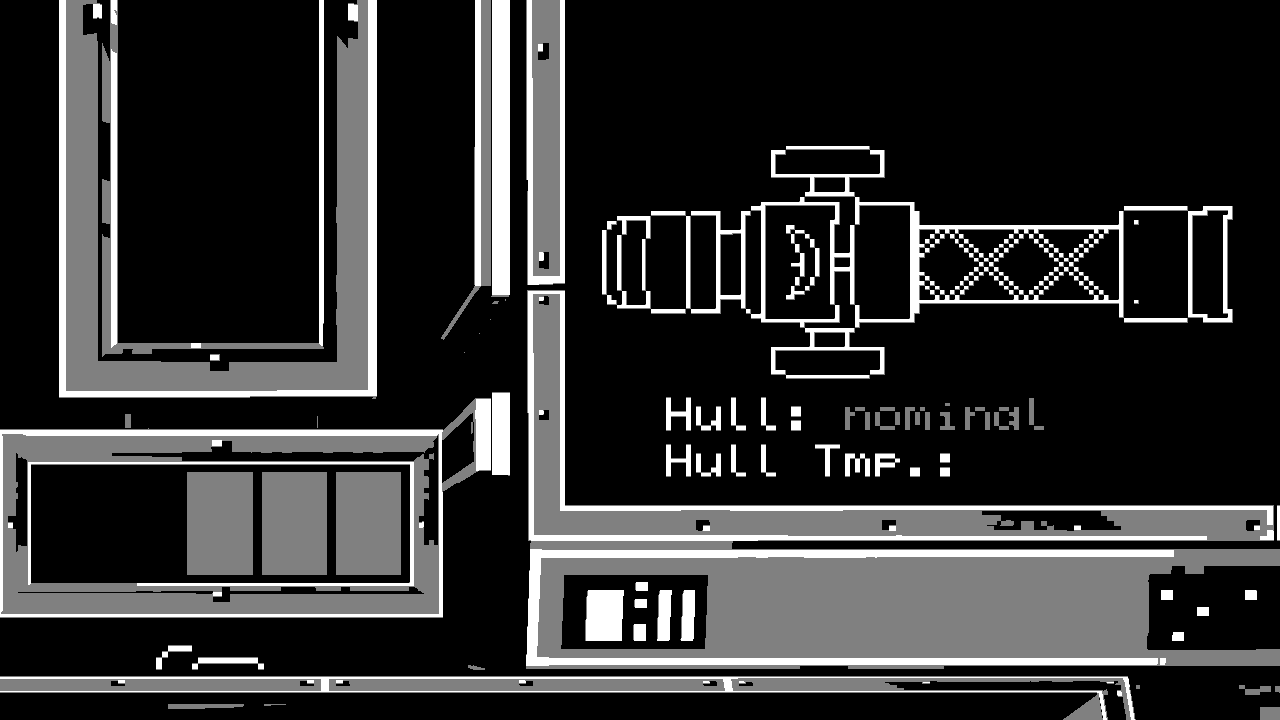
There are two areas where I think submarines are similar to spaceships:
- Absolutely massive engines compared to the habitable area.
Both submarines and spaceships have to have huge engines per small crew to be able to move fast enough. Your ship is, for the most part, a giant weak point weak point and susceptible to being immobilized. Alien (1979) did this kind of thing with the ship design of the Nostromo.
- Self sustainable, to a point.
Modern submarines don’t ever have to resurface, unless they are refilling food supplies. Same thing is largely true for the ISS, everything is recycled, but growing food is impractical (except for herbs sometimes) due to the amount of space it takes. I imagine in a sci-fi setting having a small greenhouse on your ship would be essential for long duration flights.
However, a key difference is that submarines can afford to have layers and layers of hull plating, while spaceships cannot. When travelling to space, you have to be very considerate of how much weight you carry. Every extra gram will reduce your speed and thus, reduce your maximum altitude. Spaceships are fragile.
This would be the design of a basic spaceship:
Two main modules: the engine and the crew compartment, connected by solid beams. Both modules have radiators sticking out.
┌────┐
┌─┐ │┼┼┼┼│
│┼│ │┼┼┼┼│
┌───┴─┴┐ ┌───┴────┤
<-- o───┤ crew ├──────────────┤ engine │
└───┬─┬┘ └───┬────┤
│┼│ │┼┼┼┼│
└─┘ │┼┼┼┼│
└────┘Making good reactors a rarity is also a good incentive to not destroy enemy ships
I also assume there is a nuclear reactor on the ship to generate needed thrust. Solar panels just don’t have the required energy output in deep space. However, a reactor with decent efficiency will cost you. Better reactors ergo less heat generated, ergo more useful for stealth, ergo more rare/expensive. Fusion reactors would probably be legendary in this setting.
The engine/reactor module is separated from the crew for safety reasons. If there is a malfunction or the engine is damaged/leaking and something goes terribly wrong, the crew will be separated from it by the vacuum of space. A weapons module would be located with the engines for the same reasons.
But why are those radiators so huge you ask?
Well, sci-fi media very often misses a crucial aspect of space travel: radiating heat. Without any oxygen around you to take away the heat, it is be absorbed by the ship itself (probably melting it in a couple of spots and definitely not pleasant for the crew). That’s why you need radiators that “vent” the heat away in the form of infrared light. I will cover heat management in the next section.
Detection
An infrared image of the Hubble space telescope being processed
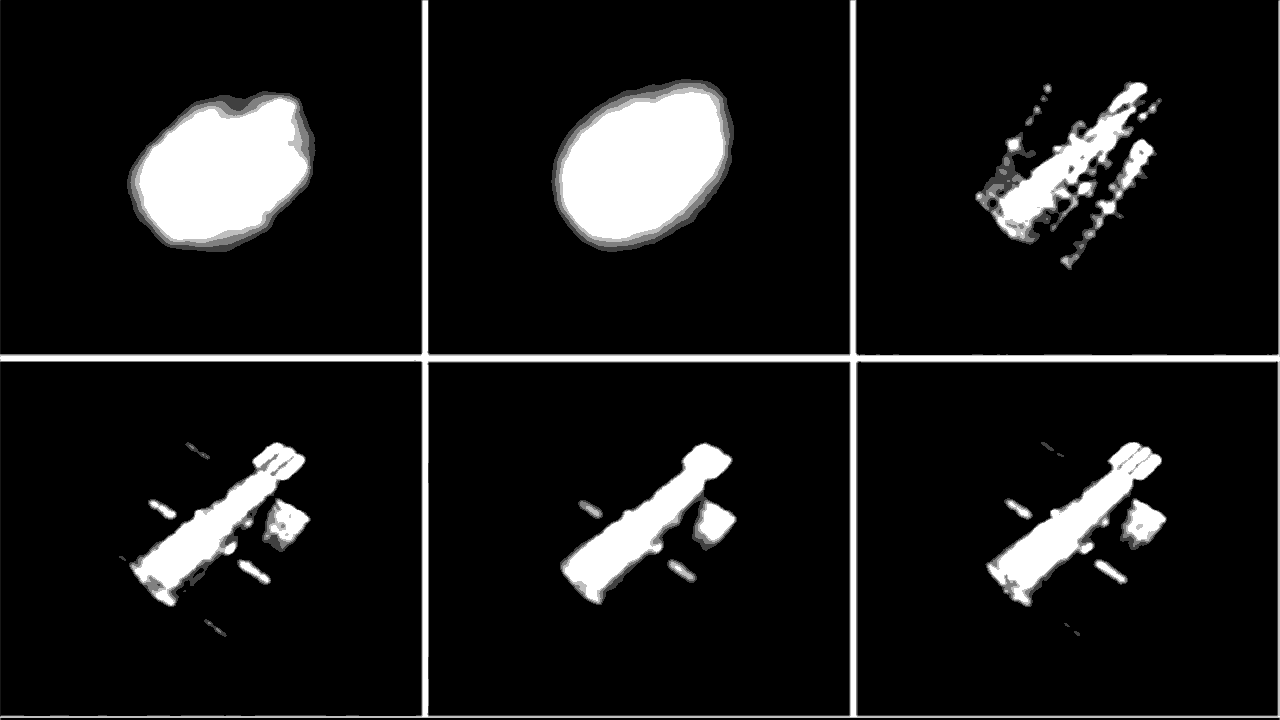
If you can be seen, you can be targeted. If you can targeted, you can be shot. If you can be shot, you can be destroyed. The best way to break the chain of events is at the beginning.
Before we can talk about being detected, we need to understand how spaceships would detect other objects.
Submarines use SONAR (which just stands for sound navigation and ranging) to locate various objects in water. They use one of two modes:
Active SONAR: the one most covered by media. It’s the one where the submarine emits a pulse of sound waves and listens for its return. Based on the time it took the sound wave to return and it’s “shape” the crew can understand what’s around them. It is used to navigate close to shore where you need precision to not crash into anything.
Passive SONAR: used for the vast majority of a submarine’s journey. Unlike the active SONAR, you do not emit anything, just listen to what’s around. Ship motors and submarines have a very distinct sound underwater that you can easily detect with this method. It is also great because you do not give away your position when using it.
I imagine spaceships would use a very similar system, except even more reliant on passive scans. Since in space you can actually see what’s around, you do not need the help of active scans for navigation.
active scans are also quite useful in combat, which I cover in later section
BUT, I still think active scans are fun and could be used in specific situations. For example if you are searching for an object that has very low emissions (or none at all) you might use a laser detection and ranging system (LADAR). Instead of sound waves, it sends light waves that ping back to the ship if they hit an object. However it has the same problem as active SONAR: it basically shouts “HEY I’M HERE COME GET ME!” across the whole system.
Which brings me to my next point: EMISSIONS. As I’ve said before: in space, light travels far, so if you can emit/reflect no light at all, you are unseen (duh!). And by light I mean the whole spectrum, especially infrared (heat).
Heat
Heat is a huge problem in space. Since there is no atmosphere to spread it around, you have to vent it with radiators (those black panels that you can see on the ISS) to not get absolutely cooked by your own life support systems. For stealth it sucks because your 300K radiators stick out like a sore thumb against the 3K of the vacuum of space.
Lets look at submarines to see what they do.
Submarines have to manage sound (instead of heat), so if they want to pass an enemy undetected, they would most likely turn every sound making system on board and “go dark”/“go cold”/“drift” until they’ve passed the threat.
In Lo-5 spaceships would do the same thing. Fold those radiators and cool as much of the hull as possible (using cryogenic fuel for example), turn off the engines and the reactor, then wait until it’s safe. These moments can be great tension builders in your story. I would also make this “drifting” time quite short (probably limited by the air supply without life support), something like 100 minutes, a very cinematic number to count down from. Having this short window will hopefully not let “drifting” be too overused by the players, making it both more rare and exciting.
One of the most obvious emissions that can be detected are rocket engine plumes. When you make any burn to change your vector, you create a massive cloud of heat (and a plenty of visible light) from the aft of your ship. A long enough burn can also be used by other ships to calculate your mass and future trajectory!
So let’s see how this affects the movement of our space submarine.
Movement
The plume of Apollo 8 in Earth orbit performing its burn towards the Moon, as seen from Earth.

Imagine planets at the bottom of gravity wells. Entering and escaping orbit becomes akin to a submarine resurfacing and diving (but upside down).
How would you change trajectory and not be instantly detected? You hide behind something, preferably an asteroid, or even better - a planet. This creates specific windows where you can perform manoeuvres without the risk of being detected. Redirecting the ship outside these windows only makes sense in an emergency.
Orbital mechanics are a real headache to track at the table, which is why I try to avoid them (usually space travel is a point-crawl). However, an interesting choice arises because of ships’ orbits that we have to consider. Do you want to engage your contact in retrograde (opposite rotation) or prograde (same rotation) orbit?
Prograde orbit is the more classic one I would say. You can follow your contact for as long as you need, let your opponent make the first move. But if combat happens, it will be packed with action until one of the ships disengages. In this configuration, the distance between ships stays constant.
Retrograde orbit would be used if you want to end the combat quickly. Long periods of rest are punctuated by short encounters when all hell breaks loose. It’s like jousting on orbital scales.
A quick diagram (not to scale):
y=you, c=contact, —=plumes
burning behind a planet tailing behind a plume
* * /
* * / /
c * * c < y <
\ * * / \ \
* * y \
* * prograde | "shadow |
orbit zone"A rocket engine plume also gives an interesting advantage to pursuing ships. The plume creates what’s essentially a “shadow zone” behind itself. Since the plume generates a ton of heat, a scanner wouldn’t be able to pick up anything beyond it. If a ship can manage to position itself close enough to the plume without becoming overheated, it can proceed to tail the target for as long as their engine is burning. This creates some opportunities for high risk high reward situations—would you dare follow your target at the cost of damaging your hull?
After tailing a ship for a while, you may reach a position where you can destroy it…
Combat
A still from Battlestar Galactica (1978)
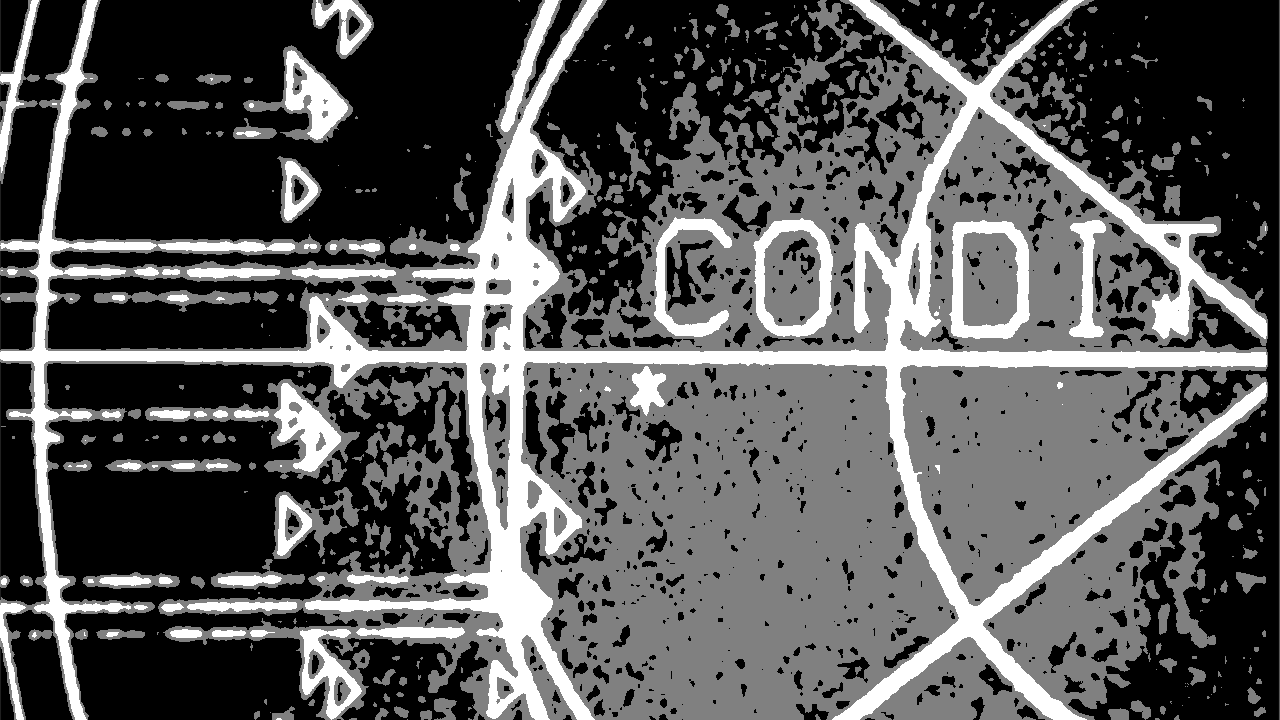
… here are two ways you can do it:
I am not going to touch on ballistic weapons, since they are well explored in other media (The Expanse for one)
- Torpedoes
The cool thing about torpedoes is that they can be deployed without your ship leaving stealth. You just have to release it close to your target and then remotely activate it. Just be careful and don’t have it lock on to your own heat signature.
If you are looking to just disable the ship instead of outright destroying it, torpedoes can be equipped with EMP charges, or they can attach themselves to a ship and mess with the engines. These options are great because you can salvage your torpedo and recycle it for future use—good if you are a crew who is running low on budget.
A defence measure against torpedoes would be deploying a decoy. A decoy emits heat to confuse the torpedo and draw it away from the ship. However, decoys come in limited amounts and are imperfect. If you run out or the decoy is ignored by the torpedo, the situation will go bad, end quick.
- Lasers
See the problems of laser cutting to get an idea of the process
Lasers are awful because you need to radiate enormous amounts of energy and heat to generate a beam, making you a perfect target for the aforementioned torpedoes.
But what about a GDL? Well, those take a lot of liquid CO2 to function, not the most practical option to transport in space
Lasers are great because they instantly hit your target. The problem is that several thin sheets of reflective material separated by vacuum will be enough to sufficiently slow down the laser getting through the hull.
The only place not defended against light? The sensors of course. This makes lasers the perfect weapons to disable enemy scanning completely (which can happen to you as well!). However, sensors will be tucked away in non-obvious points on the ship. To accurately target a sensor you will have to know your targets ship structure, rotation, trajectory and speed.
Noise
The heat generated during the battle can introduce noise to your scans. This makes your information less detailed and targeting less accurate.
To simulate the errors introduced in the heat of battle, I am introducing the Noise modifier to any “to hit” rolls. In addition to the dice you normally roll to hit, roll dice (d4, d6, d8 depending on your game) equal to the amount of Noise your sensors have. Reduce (or otherwise modify for disadvantage) your to hit roll by the highest Noise die rolled.
Add Noise when:
- performing a burn
- firing lasers
- there is an explosion nearby
- target has unknown trajectory
Add 2 Noise when:
- you are attacked by lasers
- the target is unidentified
You can remove all noise when you perform an active LADAR scan.
Combat Procedure
adapted from quadra’s combat flowchart for Mothership
COMBAT BEGINS (someone attacks, there is a time limit etc.)
└→ retrograde or prograde orbit?
└→ retrog: short and brutal encounter windows
└→ prog: time for recon, then combat every turn
└→ New turn: calc results, situation is described ←─┐
└→ Players declare energy units spent │
└→ Update Noise and Heat modifiers │
└→ Perform calculations, burns and attacks │
└→ Is the situation still tense? │
└→ Yes───────────────────────────────┘
└→ No: Return to normal timeNotice how both attack options are high risk high reward. I like to keep it this way to have combat be the last resort in this setting. There are lot’s of things that can go wrong and it’s much better (and safer) if you come up with a non-aggressive solution to a problem.
Speaking of solutions…
Computers
Analog computer video game (1964)
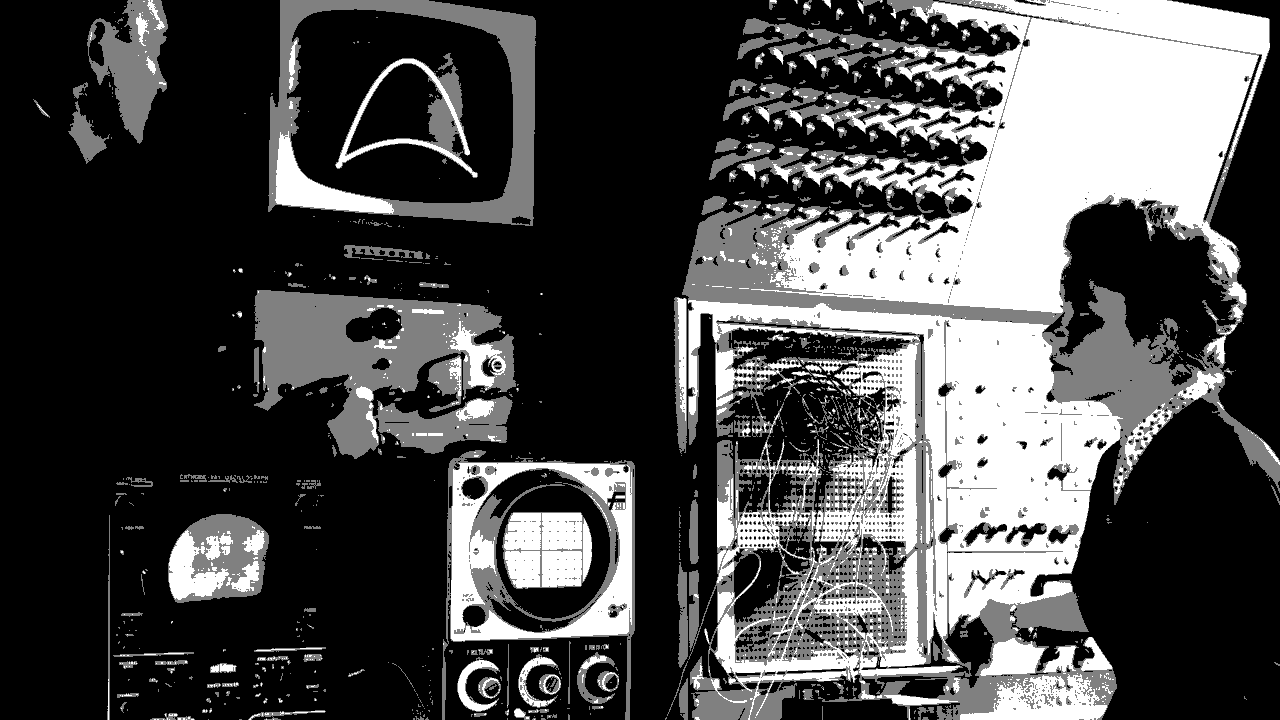
Remember I mentioned those tubes and cables? Well, they can be used to help you not die in space.
Magic!
In the world of Lo-5 computers are slow, but they perform incredibly complex tasks that decide between life and death (which is similar to how Battlestar Galactica does it). Their computing power is limited, so you have decide which calculations you want to prioritize every turn. Information becomes extremely precious when you don’t have the capacity to know everything.
I talk about energy units in a later section about emissions management.
When you want to make a calculation, decide on its complexity. Based on what you choose and how many energy units you are willing to spend, place a counter ticking down every turn until the calculation is done.
A computer’s task can be…
- Simple: 1 turn per/energy unit
- Moderate: 2 turns per/energy unit
- Complex: 3 turns/energy unit
Example: you trying to calculate your own ship trajectory. You are moving close to several big asteroids and a moon at high speeds, so let’s say its a moderate complexity calculation. If you invest 1 token it will take 2/1=2 turns to calculate. 2 tokens - 2/2=1 turn, and so on.
Less than 1 turn is an instant calculation, but remember about the heat generated! Every energy unit you spend on a calculation will be converted into heat and raise your chances of being detected (details in the next section).
Drift time is how long you can go without venting heat
An incomplete list of possible calculations you might need on a spaceship:
| calculations |
|---|
| drift time |
| own ship trajectory |
| target identification |
| target trajectory |
| target rotation |
| own ship manoeuvre |
| active scan |
| weapons fire |
| light speed jump |
Game Ideas
Some ways to gamify the setting I’ve outlined above.
1. Ship Stations
Let’s start with what’s going on inside the ship. The most important thing imho is to give each player a role that is not too overwhelming, and is not limited to just a single situation.
- Navigation: that’s piloting! They are also in charge of the map and relaying information about the flight path of the ship.
- Comms: in charge of sending and receiving communications from other ships, but also detecting and identifying new contacts. Would be cool if they have a log sheet where they can write down the names and stats of ships they meet.
- Weapons: targeting enemy ships, loading and firing lasers or torpedoes. They are in charge of the to hit rolls when firing.
- Engineering: they deal with repairs and managing the energy supply of the ship (when to use full power, when to lay low). Ageing systems can be represented with something like usage dice (from The Black Hack) - the smaller the die size, the closer the component is to breaking.
- Computing: like engineering, but specifically for dealing with computers. They are the messenger between the crew and the computer, relaying calculations needed to be made and keeping track of the results.
I’ve already noted that emissions management is extremely important in space stealth, so let’s dive in.
2. Emissions Management
A good rule of thumb is: the more electricity something consumes, the more heat it will have to radiate away. So the task of energy management is figuring out what systems are crucial at this moment, and what has to be turned off in order to save enegy/heat.
During a game I would use tokens to represent available energy (let’s say 5 for this example). The role of the engineer would be distributing these tokens between turns and notifying the crew what can and cannot be used. If they decide to cut off navigation, it better be for a good reason.
Adding several tokens to a system will boost its performance. Here is what a spaceship in the process of searching an area would look like:
LADAR has two energy tokens, allowing for higher chances of detecting an enemy ship. Lights are turned off to gain that extra token.
reactor: on | engine: idle
passive LADAR ++
navigation +
computers +
life support +
lights -If you are just cruising in friendly space, I imagine you would be broadcasting a signal to avoid crashing into other vessels.
If the players aren’t actively trying to hide their ship, resolve detection based on common sense. How far away are they from traffic hubs? Does the session call for an exciting moment?
And if the players are actively in stealth mode, here is my detection procedure:
Roll for detection every space travel turn in plain sight. Roll every other turn in a nebula. Don’t roll if you are hiding behind an asteroid or a planet.
If performing a burn, roll for detection immediately +10 Heat.
If active LADAR is used, roll for encounter immediately.
2.1. Detection Roll
Roll 2d6 with the following modifiers:
+1 Heat for every energy unit spent on keeping a system active (life support, computers, lights etc.). Could have different systems cost you different amounts of Heat emitted.
+3 to +9 Heat for a running reactor (depending on its efficiency). If it’s off, systems deactivate automatically if they are not connected to an auxiliary power supply. The engine cannot burn without a reactor on.
Now compare your result with the relevant detection threshold. If your result is over the given value, your ship is detected and hailed, roll for spaceship contacts.
High traffic area (near space ports): detection on a 10+
Medium traffic area (flight routes): detection on a 15+
Low traffic area (system outskirts): detection on a 20+
and:
| 2d6 | spaceship contacts |
|---|---|
| 2 | Pirate base |
| 3-4 | Pirate hunter |
| 5-6 | Interceptor |
| 7 | Freighter ship |
| 8-9 | Corvette |
| 10-11 | Battle cruiser |
| 12 | Mothership |
Okay, but how do we know what’s going on outside the ship?
3. Ranges
This is a way to abstract space combat without the use of grids. These ranages are based on actual ranges used in submarine navigation!
Draw three concentric circles around your ship. As an option you can also mark sectors within these circles (like forward and aft for instance). Use miniatures or tokens to represent contacts travelling through space. The zones inside those circles will represent the three ranges of your sensors:
- Detection range: when something is in this zone, you know it’s there. You won’t know the details, but you can approximate it’s size and trajectory.
- Identification range: objects that reach this zone can be identified and scanned.
- Targeting range: this is when your sensors can lock onto an enemy and torpedoes will be able to quickly reach their target.
- Your ship: if something like a torpedo or an asteroid reaches this area, it hits your ship!
Every turn contacts can move through these ranges, depending on hidden knowledge. The basic movements are:
- Parallel: the object stays the same distance from your ship.
- Across: the object passes close to your ship, but not on a collision course.
- Constant bearing: that’s when the object gets closer to you every turn. If this happens, it’s likely that you were detected. There might be a collision if you don’t get your ship out of the way (shooting the thing won’t do much in space, it will still be moving at you but in a million pieces).
And that’s all I have for now. Thank you for reading this far!
Further Reading
Throne of Salt - A Layman’s Guide to Hard Sci-Fi - has some great tips on how to further use real world knowledge to deepen your setting.
Atomic Rockets - Detection - an article on stealth in space. It has nice examples from fiction, as well as a great collection of reference images (some of which I used in this post).
Wikipedia - Interplanetary Spaceflight - a good intro to modern propulsion systems that you could use in your game. Also it explains the basic mechanics of moving from planet to planet in an approachable way which is always a plus.
Published on September 6, 2021.
Tagged: space mechanics setting mindmeld
Comments
Spooky action at a distance is a blog run by emmy verte, to muse on sci-fi, fantasy location exploration and short fiction. You can donate to support Ukraine here.